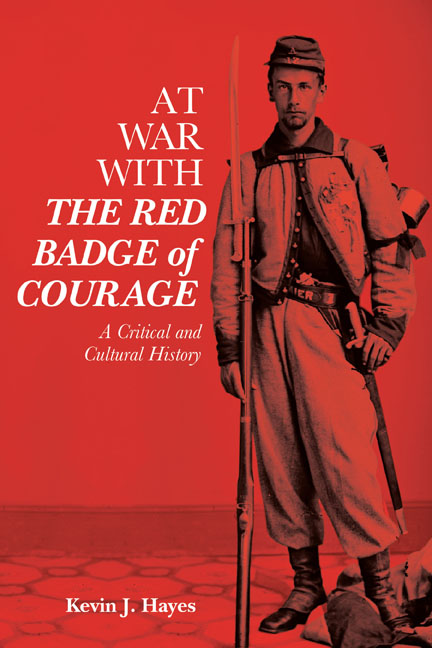3 - The Rise of Literary History
Published online by Cambridge University Press: 24 November 2020
Summary
Four months before the United States declared war on Germany, H. E. Dounce published a critical essay in the New York Evening Sun titled “Stephen Crane as a Craftsman.” Dounce situates Crane within the history of American literature, finding him “our most original genius since Poe, with the exception of Frank Norris.” Discussing how Crane's writing looked forward to modernism, Dounce seems more intrigued with his poetry than his prose. Crane “anticipated most of the things which the more attractive wing of the Free Verse army, Miss Amy Lowell's wing, is striving after.” Red Badge, too, foreshadowed modernism, being written in a manner akin to what André Breton would call automatic writing. Dounce continues: “The soldiers in The Red Badge are multiplications of one animate lay figure—yclept the youth, and the youth is Crane, under an auto-hypnosis and with the realities changed, going through the sensations of a battle like Bull Run.”
Dounce's discriminating essay seems out of place in the pages of an evening paper. “Stephen Crane as a Craftsman” would be more appropriate for a scholarly journal sponsored by a college English department and published by a university press. But when it appeared in January 1917, there were virtually no journals that welcomed articles like it. Even after the Great War such journals were slow in coming, but newspapers and magazines occasionally published articles about Crane.
In 1919 Harriet Monroe wrote a Crane essay for Poetry, the magazine she had founded as a forum for modernist verse. Though the similarities between his verse and Imagism gave her an excuse to discuss Crane, Monroe preferred his fiction. She liked Maggie best but thought Red Badge possessed “the same vividness of realistic detail artistically concentrated upon the presentation of a character and a situation.” Red Badge reminded her of Conrad's Typhoon, especially in its “penetrating descriptive power, presenting intensively a single cataclysmic experience of a human soul struggling against sublime obstacles” (148–49).
None of the Red Badge articles that appeared the first few years after the Great War are more sophisticated than the one Herbert Read wrote in 1921 as an installment of “Readers and Writers,” his regular literary column in New Age. Inspired by a review of Georg Lukács's Die Theorie des Romans, Read used Lukács's classification of the novel as a subset of die grosse Epik—great epic writing—to interpret Moby-Dick.
- Type
- Chapter
- Information
- At War with The Red Badge of CourageA Critical and Cultural History, pp. 63 - 88Publisher: Boydell & BrewerPrint publication year: 2020



